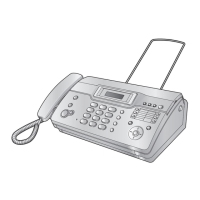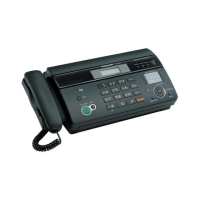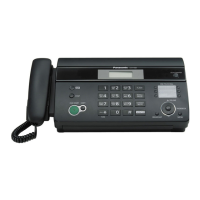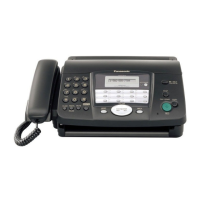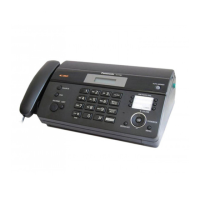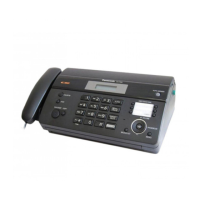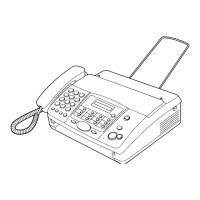CIRCUIT OPERATIONS
- 135 -
KX-FT21LA
Explanation of Signals
Control signals are comprised mainly of 8-bit identification signals and of the data signals added to them. Data signals
are added to DIS and DCS signals.
Signal.....DIS (Digital Identification Signal)
Identification Signal Format.....00000001
(Example)
Phase A
Phase B
Phase C
Phase D
Phase E
Transmitting Side Receiving Side
Dial Tone
Document set
Dial
FAX SW
Checks the performance of the
sending machine (document width,
transmission speed, etc.), and sets
the communication mode.
Transmission Start
Transmission End
Information of Disconnect
Disconnect
Bell
(CNG)
CED
DIS
DCS
CFR
Training 1, TCF
Training 2
Image Information
RTC
EOP
MCF
DCN
Notifies the capacity of the
receiving unit (e.g. , recording
paper width, transmission speed).
Bell Detection
Checks the receiving preparations
and line condition.
Receive preparation OK
Record Start
Record Stop
Reception OK
Disconnect
Function:
Notifies the capacity of the receiving unit.
The added data signals are as follows.
Bit No.
1
2
3
4
5
6
Transmitter - T. 2 operation
Reserved for future T. 3 operation features.
Receiver - T. 3 operation
Transmitter - T. 3 operation
T.2 IOC = 176
Receiver - T. 2 operation
DIS/DTC
Receiver - T. 2 operation
T. 2 IOC = 176
Receiver - T. 3 operation
DCS
(6) Explanation of Technology
1.G3 Communication Signals (T. 30 Binary Process)
For G3 facsimile communication, this is the procedure for exchanging control signals between the sending and receiving
machines both before and after transmission of image signals.
Control signals at 300 bps FSK are: 1850 Hz...0, 1650Hz...1.
An example of the binary process in G3 communication is shown below.
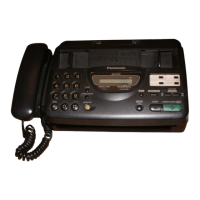
